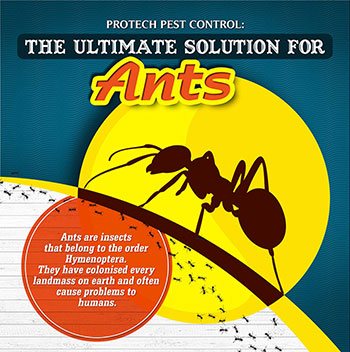Beyond The Spray: Exploring Advanced Techniques Utilized By Pest Control Experts
Beyond The Spray: Exploring Advanced Techniques Utilized By Pest Control Experts
Blog Article
Uploaded By-Damgaard Hendriksen
Are you tired of relying exclusively on sprays to take care of bugs in your house or office? While natural ant removal can work, pest control professionals have developed innovative techniques that surpass simply spraying chemicals.
These strategies not just give more efficient and lasting solutions, however additionally focus on decreasing the use of dangerous chemicals. By exploring these sophisticated strategies, you will certainly discover an entire brand-new globe of pest control approaches that are not only reliable, but likewise environmentally friendly.
So, are you prepared to take your bug control video game to the next degree?
Integrated Pest Management (IPM)
If you're trying to find an efficient and environmentally-friendly strategy to pest control, Integrated Pest Management (IPM) is the solution you require. IPM focuses on long-lasting avoidance and administration of parasites, rather than just counting on pesticides. This method considers the details demands and habits of pests, along with the surrounding environment.
By using a mix of methods such as organic control, environment control, and targeted chemical use, IPM aims to decrease the dependence on chemical therapies and lessen injury to non-target organisms.
One vital element of IPM is keeping an eye on and recognizing bugs precisely. This includes consistently checking and evaluating the pest population, along with identifying the details types existing. By understanding the biology and actions of pests, parasite control professionals can develop targeted methods to disrupt their life process and reduce their numbers.
Another important component of IPM is utilizing non-chemical control methods whenever possible. This can include physical barriers, such as setting up displays or securing splits and holes, to avoid parasites from entering structures. Furthermore, social practices, like appropriate cleanliness and waste management, can aid remove pest food sources and reproducing premises.
When chemicals are needed, IPM focuses on utilizing them judiciously and as a last hope. This implies selecting the least toxic and most effective choice, using it precisely and only to impacted locations, and adhering to all safety guidelines. By Recommended Webpage , IPM decreases the prospective dangers to human wellness and the atmosphere.
Biological Control
To even more improve the efficiency of Integrated Bug Monitoring (IPM), the next subtopic we'll explore is the approach of biological control. This strategy uses natural killers or bloodsuckers to regulate bugs.
Below are 4 vital facets of biological control:.
1. Intro of all-natural enemies: In this approach, beneficial bugs or microorganisms are introduced to the area infested with pests. These natural opponents exploit the parasites, helping to minimize their populace.
2. Preservation of all-natural adversaries: Instead of introducing new organisms, this technique concentrates on producing a suitable atmosphere for existing valuable insects. This can be achieved via providing food, sanctuary, and water resources.
3. Enhancement: Here, the number of all-natural enemies is increased artificially by reproducing and launching them into the ravaged location. This aids to quickly decrease the pest population.
4. Push-pull strategy: This method incorporates repellents and attractants to control the habits of pests. Repellents press parasites far from crops, while attractants entice them in the direction of catch plants or areas where they can be conveniently controlled.
Habitat Adjustment
Habitat modification plays an important role in bug control by altering the environment to inhibit insect problems. By making changes to the physical characteristics of a room, you can create an inhospitable setting for parasites, making it harder for them to survive and grow.
One common method of habitat modification is getting rid of or reducing potential food resources for pests. This can consist of correct waste administration, securing containers, and cleaning up food crumbs.
Additionally, eliminating or reducing locations of standing water can help regulate bugs like mosquitoes.
Transforming the landscape by trimming trees and bushes away from structures can additionally protect against insects from accessing your home.
Conclusion.
So there you have it - the sophisticated methods used by pest control professionals exceed simply spraying chemicals. Integrated Insect Administration (IPM) integrates various approaches to effectively control pests, while organic control uses natural opponents to maintain insect populations in check.
Habitat modification additionally plays a vital duty in preventing bug infestations.
Did you know that according to a research study, executing IPM techniques minimized chemical use by an average of 71%? This not only secures our wellness and the atmosphere however additionally conserves money in the future.
